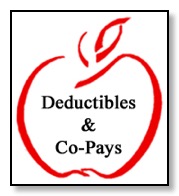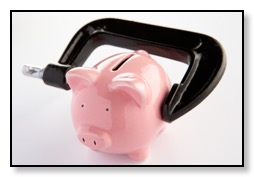

A typical dental insurance break down (coverage) will look like this:
» Preventative - 100% No Deductible - Cleanings, basic exams, etc.
» Endodontics - 80% $50 Deductible - Root canal therapy
» Basic/Extractions - 80% $50 Deductible - Fillings, extractions, etc
» Major Restorative - 50% $50 Deductible - Crowns, bridges, etc.
» Night Guards - 50% $50 Deductible - Guards to protect your teeth from grinding
» Ortho - $1,500 lifetime with no deductible - Braces, retainers, invisalign, etc.

Out of Network Dental Office:
» Filling cost: $100
» Your allowable fee: $80
» Your coverage: 80%
» Your copay: Filling Cost - (allowable fee * 80%) = $36
In-Network Dental Office:
» Filling cost: $100 - No longer applies since you are in-network
» Your allowable fee: $80 (this is your contracted fee now)
» Your coverage: 80%
» Your copay: Allowable Fee * 20% = $16
In this situation, going to an in-network dentist saves you 55%!
So the basic calculation is as follows:
(Dentist’s Price - In-Network Adjustment or contract rate) * (1.0 - Percent Coverage) + Your Deductible

After the first $50 of treatment, your insurance plan will start covering by their percentage. For example, if you have a $50 copay and 80% coverage on a $100 treatment, your copay would be:
$100 - $50 = $50
Insurance covers 80% of $50 = $40
> So your copay is: $100 - $40 = $60.
Once your deductible is paid (the first $50 in this example), you would only have to pay the 20% that the insurance company doesn’t pay.
This puts a little more of the cost of treatment on you at first. The “game” is to expend all your insurance you need to utilize in one calendar year. Because the deductible is usually annual (yearly), it resets each year. So, if you do a few fillings on year 1 and a few on year 2, you end up paying your deductible twice. Obviously, we can’t plan for all dental treatments; but, if we know that you need a few fillings or crowns, we suggest that you do them in the same year to save on the deductible.

While other plans let the dentist charge the full amount, in our office, we continue to offer our patients the insurance discount price even after they have reached their annual maximum. It's just like it sounds, in the beginning of the year, your $1,500 is replenished and you can start receiving benefits again. The only caveat with this is Ortho. Usually, Ortho or braces/invisalign come out of a separate account. Most plans will pay a lifetime amount of $1500 towards invisalign and braces. Once you have used this up, they will not pay any more.
Here are a few more “limitations” that are commonly used in dental insurance plans:
» Non-duplication of benefits – Some dental insurance plans won't pay for certain procedures if they are covered by another insurance plan. This may apply if you have dental insurance coverage under more than one plan (dual coverage).
» Pre-existing conditions – A pre-existing condition refers to an illness or other health condition that existed during the six months before you enrolled in your current dental insurance plan.
» Annual maximum – The annual maximum is the maximum dollar amount your dental insurance plan will cover for approved dental services during a calendar year.
» Deductible – The deductible is the amount of money you'll have to pay within the calendar year before your dental insurance coverage kicks in and starts to pay.
» Percent coinsurance – The percent coinsurance refers to the percentage of the costs (for covered dental services) you'll have to pay after you've met your deductible for the calendar year.
» Wait period – The amount of time you have to wait before your plan will start covering major treatment. Thus the insurance company gets their premiums prior to your getting the benefits.
» Pre-Authorization – The process to determine what your plan will and will not cover - by submitted clinical information and a request for review to your insurance company, they will mail you a letter describing your coverage. It’s the only way to know for sure what your plan will cover.

We can also submit the paperwork to reauthorize your treatment. Finally, we will do our best to estimate any copays and deductibles for you prior to your appointment. Most of the time, we send patients home with an estimate prior to their appointment. This way they know what to expect. We really do try to minimize the billing surprise.
We'd love to hear from you.
📩
Send us Email
📅
Request Appointment